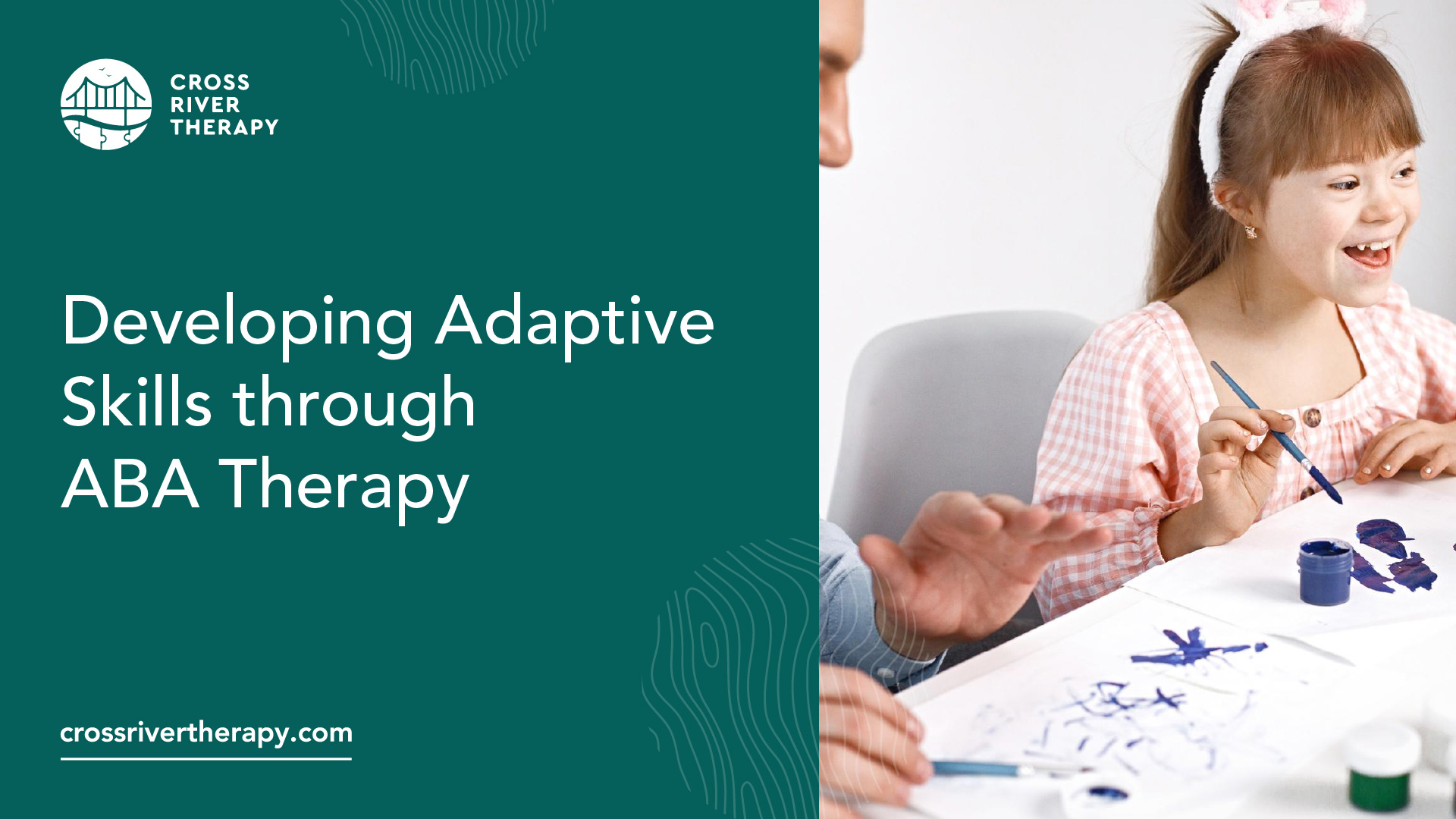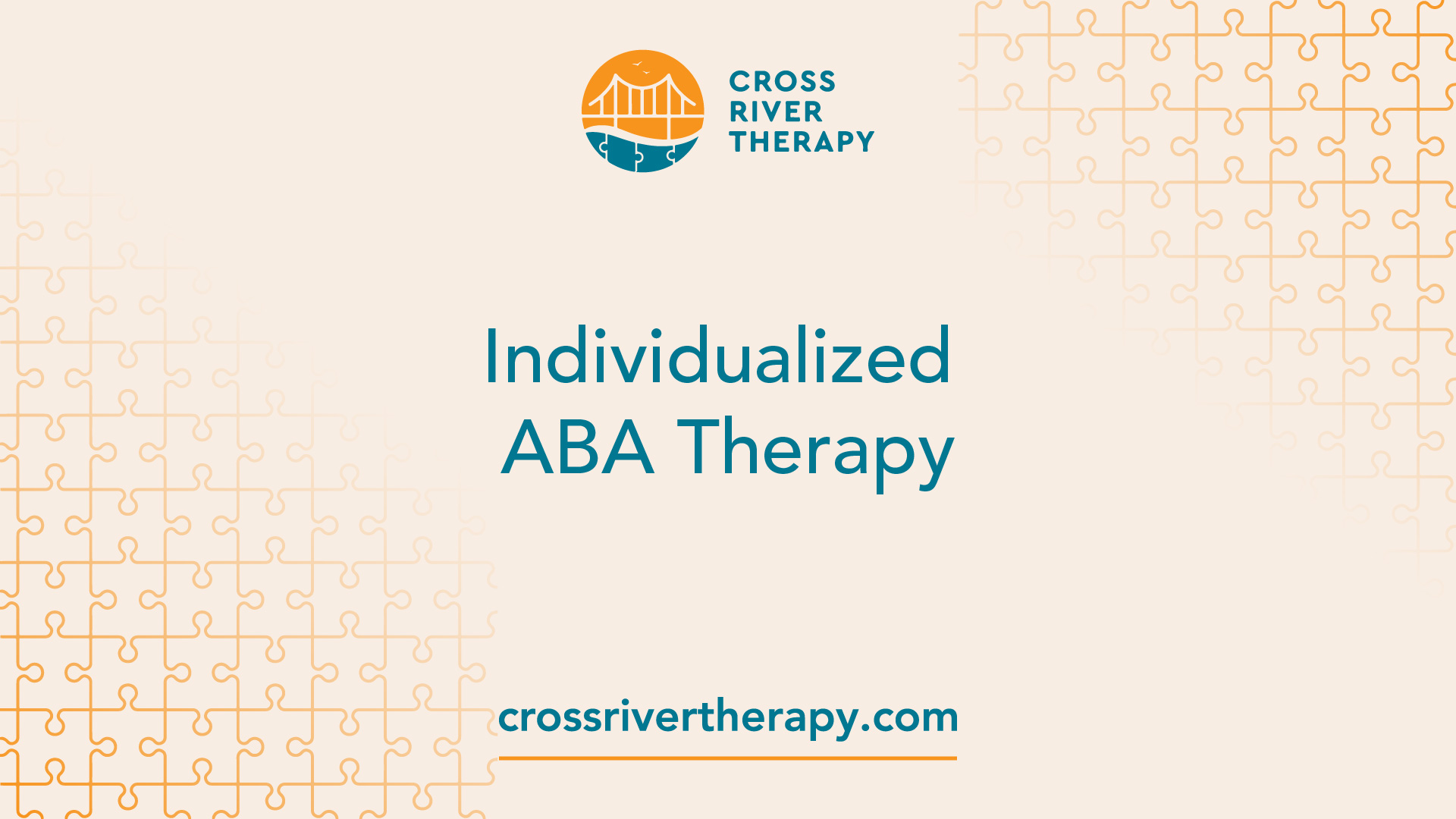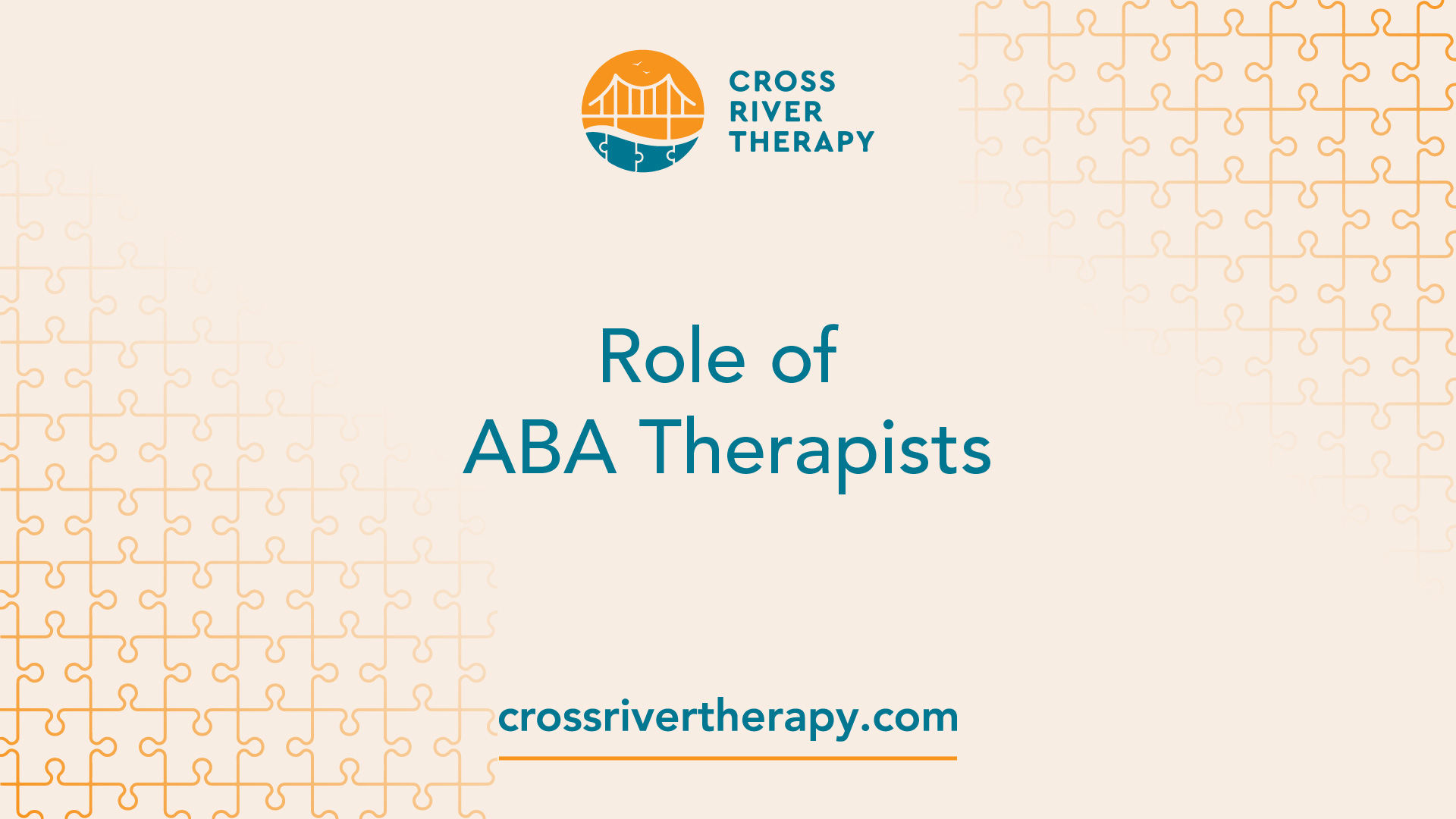Developing Adaptive Skills through ABA Therapy
Discover how adaptive skills training empowers children with autism for a brighter future.

Importance of Adaptive Skills Training
Adaptive skills training plays a crucial role in the field of ABA therapy, particularly for individuals diagnosed with autism. The focus of adaptive skills training is to enhance an individual's ability to function independently and effectively in various aspects of their life. This section will explore the goals of adaptive skills training and the importance of tailoring treatment plans to meet individual needs.
Goals of Adaptive Skills Training
The primary goal of adaptive skills training is to increase an individual's life skills, enabling them to become more independent and integrated into their home and community. The specific goals of intervention are determined through an initial evaluation, which helps identify areas of strength and areas that require improvement. These goals are based on socially appropriate norms and are individualized to address the unique needs of each individual [1].
The intervention targets various domains of adaptive behavior, including conceptual skills (e.g., language and literacy, time and number concepts), social skills (e.g., communication, social interaction), and practical skills (e.g., self-care, home and community living). By focusing on these areas, individuals can develop the necessary skills to navigate their daily lives more effectively and with greater independence.
Tailoring Treatment Plans
One of the key aspects of adaptive skills training in ABA therapy is the customization of treatment plans to meet the specific needs of each individual. Since every person is unique, it is essential to tailor interventions based on age, developmental level, and individual strengths and challenges. By doing so, therapists can provide targeted and individualized support to help individuals acquire and improve their adaptive skills.
Assessing adaptive behavior is a critical step in developing effective ABA interventions. Therapists use standardized tools to measure an individual's current level of adaptive behavior and identify areas that require intervention. This assessment helps therapists determine the starting point for intervention and establish baseline data that can be used to track progress over time.
Once the assessment is complete, ABA therapists develop treatment plans that address the specific needs of the individual. These plans often prioritize a few adaptive skills at a time before moving on to others, ensuring focused and systematic progress. Therapists employ various strategies, such as task analysis, modeling, prompting, and positive reinforcement, to teach and reinforce adaptive skills effectively. The use of positive reinforcement is particularly important, as it helps motivate individuals and increases the likelihood of skill acquisition and maintenance.
By providing individualized and targeted interventions, ABA therapists aim to enhance an individual's adaptive behavior and promote their independence and overall quality of life. Through ongoing assessment, regular monitoring, and adjustments to treatment plans, therapists ensure that individuals receive the support they need to thrive in various settings.
Early Intervention with ABA Therapy
When it comes to providing effective support for children diagnosed with autism spectrum disorder (ASD), early intervention plays a crucial role. ABA therapy, or Applied Behavior Analysis therapy, has been widely recognized as an effective treatment approach for individuals with ASD. Starting ABA therapy during the critical developmental period can lead to significant improvements in long-term outcomes, as the brain of a young child is highly adaptable during this time.
The Critical Developmental Period
Early childhood is considered a critical period for learning and development, especially when it comes to children with ASD. During this period, the brain is highly malleable, and interventions like ABA therapy can have a profound impact on a child's developmental trajectory. By targeting core deficits and focusing on building adaptive skills, ABA therapy can help children with ASD reach their full potential.
Benefits of Starting Early
Starting ABA therapy as early as possible has been shown to yield numerous benefits for children with ASD. Research indicates that early intervention with ABA therapy can lead to significant improvements in developmental outcomes. For example, it can enhance intellectual abilities, communication skills, expressive and receptive language skills, and adaptive behavior.
A groundbreaking study conducted by Lovaas in the 1970s revealed that 47% of children with ASD who participated in ABA treatment reached normal intellectual and educational functioning, compared to only 2% of a control group. These findings highlight the potential of ABA therapy in facilitating positive outcomes for children with ASD when implemented during the critical developmental period.
While early intervention is often recommended for individuals with ASD, regardless of severity, it is worth noting that individuals with more severe ASD may benefit from starting ABA therapy at an earlier age to address their specific needs and challenges. ABA therapy can be tailored to meet the unique needs of each child, focusing on individualized goals and interventions.
By starting ABA therapy early, parents can provide their children with the necessary tools and skills to navigate the world more effectively. ABA therapy offers a structured and evidence-based approach to promoting adaptive skills and improving overall quality of life for individuals with ASD.
In the next section, we will explore how ABA therapy can be tailored to different ages, with a focus on building foundational skills necessary for the development of adaptive behaviors.
Individualized ABA Therapy

ABA therapy, or Applied Behavior Analysis therapy, is a highly individualized approach that can be tailored to meet the unique needs of individuals at different ages. The goal of ABA therapy is to help individuals with Autism Spectrum Disorder (ASD) develop adaptive skills and reach their full potential. In this section, we will explore how ABA therapy can be tailored to different ages and the focus on foundational skills.
Tailoring to Different Ages
ABA therapy is most effective when started early, during infancy and early childhood. The brain of a young child is highly adaptable during the critical developmental period, and early intervention with ABA therapy can lead to significant improvements in long-term outcomes. However, ABA therapy can still be beneficial during adolescence and beyond, focusing on building skills for independence, self-advocacy, and life transitions [3].
Individual factors, such as the severity of ASD and the developmental stage and learning abilities of the individual, should be considered when determining the optimal age for starting ABA therapy. These factors can influence the effectiveness of the therapy and the rate of progress achieved [3]. While early intervention is often recommended for individuals with ASD, regardless of severity, individuals with more severe ASD may benefit from starting ABA therapy at an earlier age to address their specific needs and challenges.
Focus on Foundational Skills
In ABA therapy, a key focus is on building foundational skills that are essential for daily functioning and overall development. These skills may include communication, social interaction, self-care, and daily living skills. For young children, the emphasis is on developing these foundational skills that will serve as a strong base for future learning and development.
ABA therapy for young children may involve a combination of structured activities, play-based interventions, and naturalistic teaching methods. The therapy sessions are designed to be engaging and interactive, promoting the acquisition of skills in a supportive environment. ABA therapists work closely with parents and caregivers to implement strategies and techniques that can be reinforced at home and in other natural settings.
As individuals progress through different stages of development, ABA therapy can be adapted to address their changing needs. For older individuals, the focus may shift towards enhancing independence, functional skills, vocational training, and life skills that are crucial for transitioning to adulthood.
By tailoring ABA therapy to different ages, individuals with ASD can receive the targeted support they need to develop adaptive skills and improve their quality of life. ABA therapy provides a structured and evidence-based approach that can be customized to suit the unique needs and strengths of each individual.
Role of ABA Therapists

ABA therapists play a crucial role in the field of ABA therapy, working closely with individuals with autism and their families to make positive changes in their lives. They are extensively trained professionals who specialize in evaluating behaviors, designing personalized therapy plans, and implementing interventions to improve adaptive skills and overall functioning.
Evaluation and Therapy Plans
An important aspect of an ABA therapist's role is conducting comprehensive evaluations to assess the strengths and challenges of individuals with autism. Through careful observation and data collection, they gather information about behavior patterns, communication abilities, social interaction skills, and other developmental domains. This evaluation process helps determine the specific goals and treatment strategies that will be most beneficial for the individual.
Based on the evaluation findings, ABA therapists develop individualized therapy plans that address the unique needs and goals of each person. These plans are tailored to the individual's age, ability level, and specific challenges they may face. ABA therapists collaborate closely with families to ensure that therapy plans are aligned with the family's values and priorities. Involving caregivers in the treatment plan helps maintain consistency and generalization of skills beyond therapy sessions.
Positive Changes in Lives
The work of ABA therapists can have a profound impact on the lives of individuals with autism. By implementing evidence-based interventions and strategies, ABA therapists help individuals develop adaptive skills that foster independence, social interaction, and overall well-being. These skills may include daily living tasks, communication and language skills, academic abilities, and social interaction skills.
ABA therapy has been recognized as the most effective evidence-based intervention for improving adaptive behaviors in children with autism. Research has shown promising results in enhancing intellectual abilities, communication skills, expressive and receptive language skills, and adaptive behavior in individuals with autism spectrum disorder. The positive changes brought about by ABA therapy can significantly improve the quality of life for individuals with autism and their families.
In summary, ABA therapists play a vital role in the evaluation, design, and implementation of therapy plans for individuals with autism. Their expertise and dedication contribute to positive changes in the lives of individuals with autism, helping them develop essential adaptive skills and reach their full potential.
Settings for ABA Therapy
When it comes to ABA therapy for individuals with autism, the therapy can take place in diverse environments, allowing therapists to provide support tailored to the unique needs and circumstances of their patients. ABA therapy can be conducted in a variety of settings, extending beyond the therapist's office. Let's explore the different settings where ABA therapy can be implemented.
Diverse Environments
ABA therapy can be delivered in a range of settings to ensure that individuals receive support in environments relevant to their everyday lives. These settings may include:
- Schools: ABA therapists can collaborate with teachers and other school staff to implement behavioral interventions and support students with autism in the classroom setting. This integration helps individuals generalize skills and promotes social interaction with peers.
- Hospitals and Mental Health Centers: ABA therapy can be provided in hospital or mental health center settings for individuals who require intensive intervention or have co-occurring mental health conditions. In these environments, therapists can address specific challenges and develop strategies to improve adaptive skills.
- Correctional Facilities: ABA therapy may also be implemented in correctional facilities to support individuals with autism who are involved in the criminal justice system. Therapists work closely with correctional staff to address behavioral issues, enhance communication skills, and promote positive behaviors.
- Community and Home Settings: ABA therapy extends beyond clinical settings and can be conducted in community settings and homes. This approach allows therapists to target skills within the individual's natural environment, fostering generalization and promoting independence in daily activities.
Catering to Unique Needs
ABA therapy is highly individualized and aims to address the unique needs of each person with autism. Therapists tailor treatment plans based on the individual's age, ability level, skills, interests, preferences, and family situation. A board-certified behavior analyst (BCBA) plays a significant role in designing and overseeing therapy programs, ensuring that they are personalized and effective [7].
By implementing ABA therapy in diverse settings, individuals with autism can receive support that is relevant to their specific needs. This approach promotes the generalization of skills across different environments and enhances the individual's ability to apply learned behaviors in real-life situations. The flexibility of ABA therapy ensures that individuals can receive assistance in various settings, allowing for a comprehensive and holistic approach to their development and growth.
If you're interested in learning about specific techniques used in ABA therapy, explore our next section on Positive Reinforcement and A-B-C Analysis Techniques.
Techniques in ABA Therapy
When it comes to ABA therapy, there are various techniques employed to effectively address challenging behaviors and promote positive skill development in individuals with autism. Two key techniques commonly used in ABA therapy are positive reinforcement and A-B-C analysis.
Positive Reinforcement
Positive reinforcement is a fundamental strategy used in ABA therapy. This technique leverages the power of rewards to encourage and reinforce desired behaviors. According to Autism Speaks, individuals are more likely to repeat a behavior if it is followed by something valued, such as praise, tokens, or preferred items.
Positive reinforcement can be tailored to each individual's unique preferences and motivations. By identifying and utilizing reinforcers that hold significance for the person, ABA therapists can effectively encourage the development of desired adaptive skills. This technique focuses on creating a positive and rewarding environment, which fosters motivation and engagement in the learning process.
A-B-C Analysis Techniques
Another essential technique in ABA therapy is the A-B-C analysis. This approach involves identifying the antecedents (A), behaviors (B), and consequences (C) associated with a specific behavior. By analyzing these components, ABA therapists gain valuable insights into the factors that influence behavior and can develop effective intervention strategies.
The antecedent refers to the events or circumstances that occur immediately before the behavior. This could include specific triggers or environmental factors that contribute to the behavior's occurrence. The behavior itself refers to the specific action or response being exhibited. Lastly, the consequence refers to what happens directly after the behavior, which can influence the likelihood of the behavior recurring in the future.
By systematically analyzing the A-B-C sequence, ABA therapists can identify patterns and determine the function or purpose of the behavior. This information is crucial for developing targeted intervention plans that address the underlying causes of challenging behaviors and promote the acquisition of more adaptive skills.
These techniques, along with other evidence-based strategies, contribute to the success of ABA therapy in enhancing adaptive behaviors in individuals with autism. ABA therapy has been recognized as the most effective intervention for improving adaptive skills, such as intellectual abilities, communication skills, expressive and receptive language skills, and overall adaptive behavior.
Through the use of positive reinforcement and A-B-C analysis techniques, ABA therapists create structured and supportive environments that facilitate skill development and promote positive behavior change. By tailoring interventions to meet the unique needs of each individual, ABA therapy empowers individuals with autism to thrive and reach their full potential.
References
[1]: https://www.actpsychology.com/adaptive-skills-training.html
[2]: https://chicagoabatherapy.com/resources/gloassary/adaptive-behavior/
[3]: https://www.adinaaba.com/post/at-what-age-is-aba-therapy-most-effective
[4]: https://behavioralinterventionforautism.com/blog/aba-therapy-success-rate-is-it-worth-it/
[5]: https://www.ncbi.nlm.nih.gov/pmc/articles/PMC9458805/
[6]: https://www.abtaba.com/blog/what-do-aba-therapists-do-8dbb7
[7]: https://www.goldstarrehab.com/parent-resources/facts-about-aba-therapy



